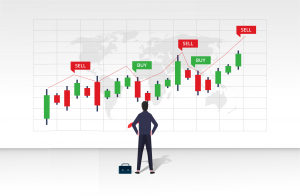What is Forex Trading?
The Foreign Exchange, or Forex market, is the world’s largest financial market which plays an imperative role in the global economy. Every day, trillions of dollars are exchanged from one currency to another. This kind of currency conversion or exchange is extremely important to global business. Forex market participants include governments, businesses, and of course, the retail traders and institutional investors. Governments use the Forex market to implement their policies. For example, when conducting business with another country, whether it’s borrowing money, lending money, or offering aid, a country needs to convert its currency into a foreign currency. Businesses use the Forex market to enable global trade. For instance, they may require to convert payments for services and goods bought or sold overseas or to exchange payments from international clients into their local currency. Likewise, investors use the Forex market to speculate on fluctuations in currency prices in the hopes of making a profit.
Currency prices change almost constantly during the week that is because the Forex market remains open 24 hours 5 days a week. The U.S dollar is one of the most dominant currencies in the Forex market. According to the International Monetary Fund (IMF), about 67 percent of the global Foreign Exchange is comprised of the U.S dollar. Although there are nearly 180 tradeable currency pairs but not all pairs are actively traded. In fact, the majority of the trade takes place in the seven major currency pairs and all of these major currency pairs include the US dollar.
So to summarize, Forex trading is the activity where you can speculate if one currency will get stronger or weaker relative to another currency. Now before going into further detail let’s first understand how the Forex market works.
How The Forex Market Works
Forex is a decentralized market that connects all the participants through a global computer network. The major players in this market are the central banks, commercial banks, financial firms, large international corporations, FX brokers, and so forth. The big players like the central banks buy and sell currencies to pursue their monetary policies. This is called the central bank intervention.

The commercial banks, investment firms, multinational companies all go through the Forex market either for currency exchange or to make speculative investments. Together all the participants make the Forex market one of the biggest in the world. The Forex market is now so big that its daily turnover has peaked to $5.2 trillion compared to only $500 billion back in 1977.
The Forex market operates 24 hours a day and goes by the trading sessions. The sessions cover the global time zones which makes it possible to trade Forex around the clock. Most significant trading sessions take place in London, New York, Sydney, and Tokyo. The sessions vary in trading volume, the most active trading session in terms of volume is the London session which is followed by the New York session. The trading activity peaks further when the timing of these two sessions overlap.
Forex trading is performed in a variety of markets such as the futures market, forward market, and the spot market. The Chicago Mercantile Exchange (CME) is one of the largest future currency exchange in the world. However, unlike the spot market, the currency futures offer
limited trading hours. Large organizations and institutional investors prefer trading in the future and forward markets due to their volume requirements. The spot market is more popular among retail traders. A survey conducted by the International Bank of Settlements shows that the share of spot transactions is nearly 20 percent.
How To Start Forex Trading
As a beginner, education is the most important step in Forex trading. There are numerous sources of education out there but at this juncture, you need to start with a basic understanding. First of all, make sure that you don’t get sucked in by the fancy advertisements that offer you Forex
education by telling you how much money you can make and how you can quit your daily job. This general hype is usually a selling pitch to entice you to sell something and is not the type of education you want.
You should start learning about the currency pairs as it is the first thing you would encounter. Once you understand currency pairs move on to learning basic Forex terminologies such as PIP, lot, and spread. Next, you need to learn about leverage, it is the most important part of Forex trading because it can make or break your trading career.

After you learn the basics, you should move to in-depth learning that covers analyzing the markets using various charting techniques and for that, you will need to learn about the support and resistance concept. Once you understand that your next step should be to learn about the technical tools and indicators Moving Averages, Bollinger Bands, Relative Strength Index, Stochastic, and so forth. Finally, when you learn all these things, you need to put all that knowledge to test by trading on a demo account, and based on the outcome you need to build a trading strategy for yourself.
Forex trading is a vast field and it has more to learn than what is mentioned here. If you are serious about it you need to understand that it will take a lot of time, study, and practice to master it. You will have to spend time on the screens looking at how prices move and how they respect certain levels.
You will be learning all that is mentioned above and beyond in our Forex Trading courses. At the end of these courses, you will have a complete understanding of the Forex market including its basic and advanced terminologies and working principle and will have enough education to build your own trading strategies and be on the path to become a successful Forex Trader.
Now that you have basic information on what is Forex and how Forex market works. Let’s move on to the next tutorial which is Diffrent types of charts.
